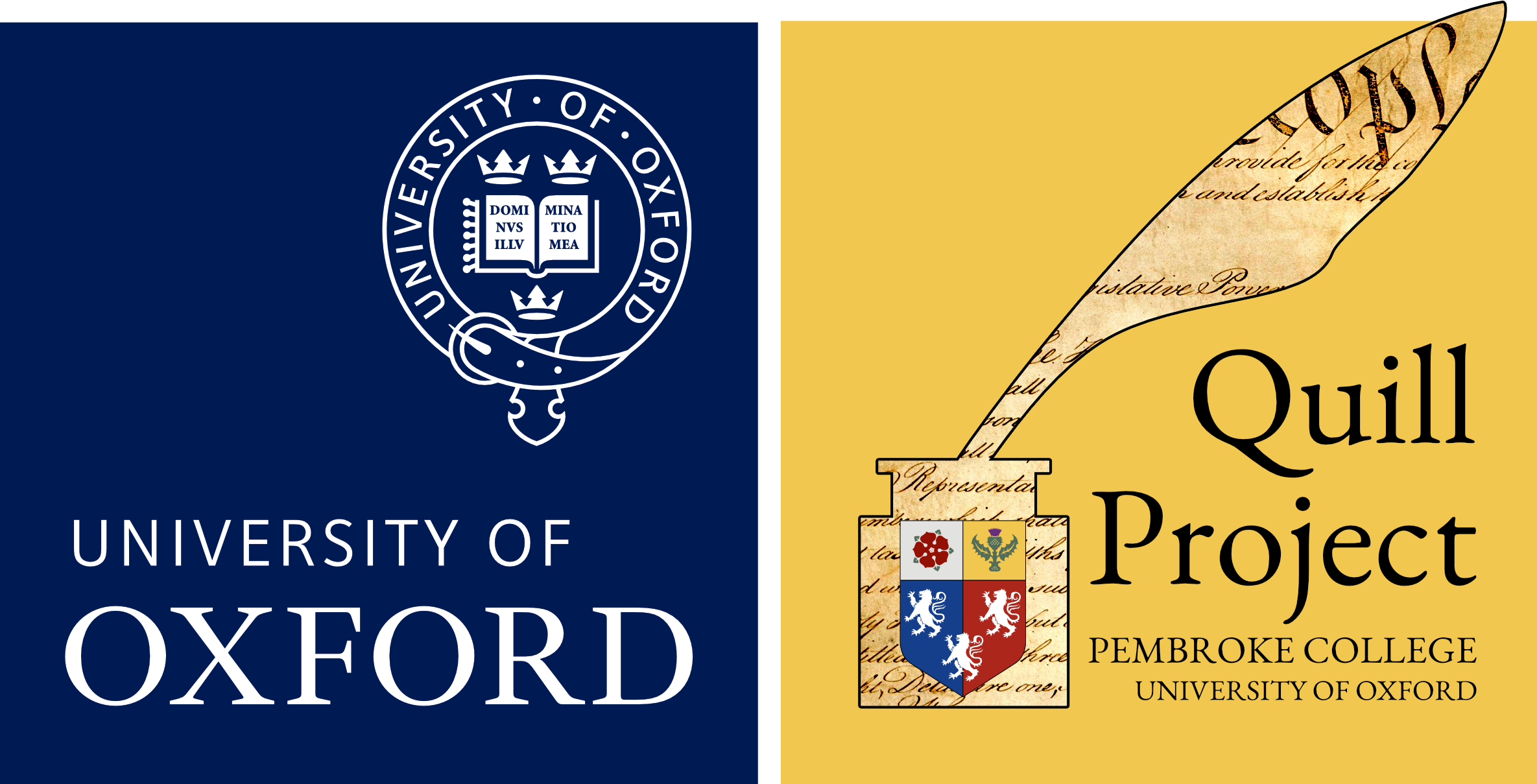About Quill
What are negotiated texts?
Allies around conference table – Treaty of Versailles, 1919
Many of the foundational texts of the modern world have not been written by individuals, but negotiated by groups of people in formal settings. Take, for example, treaties between states such as the Universal Declaration of Human Rights or the Treaty of Versailles; constitutions, such as the one negotiated by the American states in the Constitutional Convention of 1787; or, the innumerable pieces of legislation negotiated in the world’s legislative assemblies each year.
The records of these negotiations are hard to follow. Typically, official journals record the proposals made and votes taken, sometimes with a near-verbatim account of what was said, but often with only concise descriptions of debate and little consideration for intelligibility after the event. To fully understand how negotiated texts are created, it is necessary to understand both the temporal sequence of proposals and votes and the hierarchy of decision-making, as proposed amendments are themselves amended before being finally accepted or rejected.
In the case of many negotiations, the work of editing and collating the records has not been done and our work begins in the archives. However, even when edited and collated, the difficulty of following the records limits their utility for researchers and restricts broader use in education and outreach. Even a relatively short document, such as the Constitution of the USA, is the product of thousands of proposals and multiple committees.
We can all appreciate the importance of the context in which a particular decision was taken, but the nature of the official records can obscure understanding. There is no particular requirement, for example, that votes be taken in close temporal proximity to the proposal to which they relate, meaning that the context in which a vote is taken on a proposal can be considerably different to the context in which the proposal was originally made. In some cases, those who originally proposed a change may vote against it. Providing any kind of detailed commentary on this process or explaining it in classroom settings is difficult and long-winded.
The Quill platform brings together records from multiple sources to recreate a negotiation, allowing users to explore the context in which the original debates took place and offering bespoke visualizations and analysis of the complex processes involved.

